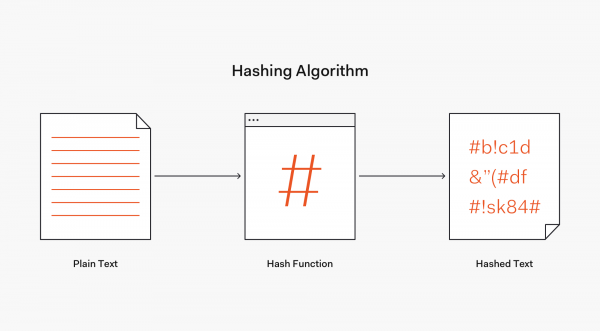Hashing: Difference between revisions
Mr. MacKenty (talk | contribs) |
Mr. MacKenty (talk | contribs) (→Videos) |
||
| Line 21: | Line 21: | ||
== Videos == | == Videos == | ||
This video will give you a general introduction to hashing. <br> | |||
<html> | <html> | ||
<iframe width="560" height="315" src="https://www.youtube.com/embed/2BldESGZKB8" frameborder="0" allow="accelerometer; autoplay; encrypted-media; gyroscope; picture-in-picture" allowfullscreen></iframe> | <iframe width="560" height="315" src="https://www.youtube.com/embed/2BldESGZKB8" frameborder="0" allow="accelerometer; autoplay; encrypted-media; gyroscope; picture-in-picture" allowfullscreen></iframe> | ||
</html> | </html> | ||
The video below helps us understand hashing within the context of [[Blockchain|blockchain]].<br> | |||
<html> | <html> | ||
<iframe width="560" height="315" src="https://www.youtube.com/embed/IGSB9zoSx70" frameborder="0" allow="accelerometer; autoplay; encrypted-media; gyroscope; picture-in-picture" allowfullscreen></iframe> | <iframe width="560" height="315" src="https://www.youtube.com/embed/IGSB9zoSx70" frameborder="0" allow="accelerometer; autoplay; encrypted-media; gyroscope; picture-in-picture" allowfullscreen></iframe> | ||
Revision as of 09:37, 6 March 2020

A hash function is any function that can be used to map data of arbitrary size to fixed-size values. The values returned by a hash function are called hash values, hash codes, digests, or simply hashes. The values are used to index a fixed-size table called a hash table. Use of a hash function to index a hash table is called hashing or scatter storage addressing.[2]
Hashing is the transformation of a string of characters into a usually shorter fixed-length value or key that represents the original string. Hashing is used to index and retrieve items in a database because it is faster to find the item using the shorter hashed key than to find it using the original value. It is also used in many encryption algorithms.[3]
Simple Code sample[edit]
# this python file should be used as part of your process to understand hashing.
# please change values so you can see how hashing works!
myString = "Hello there"
print("Before Hash: ", myString)
myHashedString = hash(myString)
print("After Hash: ", myHashedString)
Videos[edit]
This video will give you a general introduction to hashing.
The video below helps us understand hashing within the context of blockchain.
